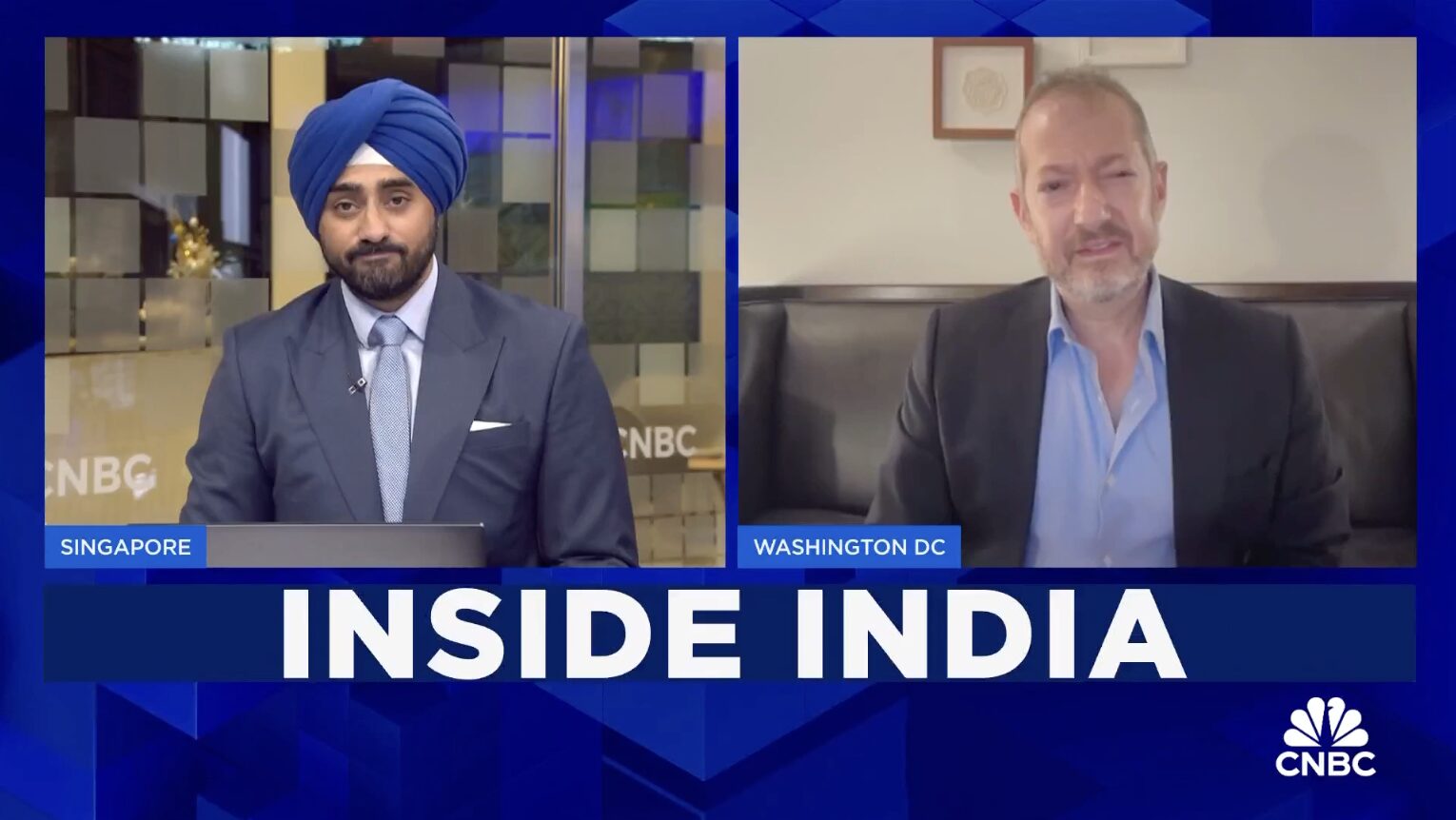
Dr. Sanjay Gupta: Explains the Science of Mouth-Taping
There’s a new sleep trend making waves: taping your mouth shut at night. Advocates say it can help you breathe better, sleep deeper, and even…
Thought Leader: Sanjay Gupta
See source for video.
The following is an extended transcript of an interview with Dr. Scott Gottlieb that aired on Sunday, September 19, 2021, on “Face the Nation.”
MARGARET BRENNAN: So why did you write this book? Who do you want to read it?
DR. SCOTT GOTTLIEB: A lot of the commentary around what happened, what went wrong, I think was very political. It was focused on a lot of the political mistakes that were made. I don’t think anyone started to delve into the more systemic problems, more systemic shortcomings, the structural features of government that I think made us excessively vulnerable to the pandemic. And I wanted to start to tell that story. I think if we’re going to make sure we’re better prepared if this happens again, and this will happen again, we start- we have to start examining, what are the features of government that failed? Why were we made so excessively vulnerable? And there certainly were political shortcomings, but there were a lot of things about the way the agencies were structured, the way the agencies responded, the kind of planning we had done in the past that we thought would better prepare us for this pandemic that weren’t up to the task.
MARGARET BRENNAN: So this is something you want public health leaders, lawmakers to learn some lessons from.
DR. GOTTLIEB: Yeah, I think at some point we’re going to start to reflect on what went wrong. We’re going to put together commissions, put together authoritative groups to try to, you know, come to some consensus about what we need to do differently to better prepare for the future. And I want this book to be part of that dialogue. This was my attempt to, you know, lay out what I think some of the things that left us vulnerable were and how we can start to repair them, how we can start to build better resiliency against these kinds of threats going forward. So I would hope that this book is going to be part of that dialogue.
MARGARET BRENNAN: You have some personal anecdotes in there. In fact, you start the book talking about the attacks on 9/11 and you were a young resident up in New York City. Why did you start there?
DR. GOTTLIEB: Yeah. So I was on elective that month. I remember the day. And so I was sort of swing labor. I was an extra hand. I wasn’t assigned to a floor. And I was post-call, so I had come off-call the night before. We saw the first plane hit the World Trade Center and then when the second plane hit, I got called into the hospital. And I spent the day working the floors, mostly trying to discharge patients because we thought that there would be a flood of patients coming into the hospital, so we were trying to clear up beds. And then at night I was assigned to a triage center in- in Chelsea Piers, downtown, near the- near the former World Trade Centers. And when I got there, I walked into a field house and it was a cavernous field house and they had set up, at some point over the course of the day, basically the equivalent of hundreds of hospital beds, but not just staffed hospital beds, but these were surgical beds. They had advanced medical equipment in hundreds of stations. And it was- it was like nothing I’ve ever seen before or since. So somewhere, you know, around New York City, someone had made a decision that New York needed to be prepared for a mass casualty event, and they had mothballed all the equipment that would be needed to do it, to handle it. And they had mothballed the logistics to set it up within hours. And the reason I told that story was because nothing equivalent really existed here. You know, in New York City, we had the first attack on the World Trade Center. There was a decision made by someone at some point that New York needed to make- prepare certain capacities. What I saw was part of that very clearly. And when COVID came, you know, we had this sort of illusion that we had prepared for a pandemic and that we had certain capacities that had been mothballed and preparations that had been made. But they were ill-suited to the- to the crisis we faced. And even the ones that were sort of appropriately measured to what we were facing weren’t ready. A metaphor for it was the masks and the ventilators. We had stockpiled, not enough, obviously, masks and ventilators, and they didn’t work. The ones we had didn’t work. The masks were expired, the ventilators hadn’t been serviced. And that’s just sort of a metaphor for the lack of preparation. But, you know, I think we didn’t- we didn’t really have the foresight to understand that a virus could threaten us in this way. We had planned for a pandemic flu. I had been part of some of that planning back in 2003 and 2005 when I was at FDA, during my first- my first stint, but we didn’t really understand how the planning that we had engaged in for influenza wouldn’t be applicable to a coronavirus.
MARGARET BRENNAN: So we prepared for the wrong threat.
DR. GOTTLIEB: We prepared for the wrong threat. But even- even if we had prepared for the right threat, the preparations still weren’t adequate. We still didn’t have the kinds of capacities we needed to, you know, flip- forward deploy the medical resources that would be required. I think we didn’t envision that in a setting of a global crisis, there would be a global run on the supply chains that were needed to properly supply the medical equipment. Just the swabs used to conduct diagnostic tests, we ran out of them. One of the bottlenecks to conducting more diagnostic testing wasn’t that we didn’t have the PCR machines, the sophisticated machines. It wasn’t that we didn’t have the labs, we didn’t have the swabs to actually collect the samples. So we didn’t understand that if you had a global crisis of this magnitude, suddenly the supply chains that we relied on would be pulled on by every country at the same time, and we couldn’t rely on them anymore. So what we needed was just a whole different mindset. We needed to build domestic capacity to do the production domestically. We needed to keep the- the apparatus that we thought we would need hot, not just warm. We couldn’t just build it and mothball it. We needed to keep it operating. We needed to keep it functional. We needed to have a logistical capability to deploy these tools. We didn’t- we didn’t have the ability to scale diagnostic testing because we couldn’t deploy enough testing centers. We didn’t have the ability to mass vaccinate the population because we didn’t have any mothballed capacity to set up vaccination sites. And that’s what I saw on 9/11. I mean, obviously small microcosm. It was a city. It wasn’t across the whole country. I mean, the country wouldn’t have been able to deal with a crisis of that magnitude, but someone had thought about how to build the apparatus and the means to deploy it very quickly for a certain contingency. We didn’t do that against a viral contingency, even though we had anticipated and expected that at some point we’d be challenged with a pandemic.
Dr. Sanjay Gupta: Explains the Science of Mouth-Taping
There’s a new sleep trend making waves: taping your mouth shut at night. Advocates say it can help you breathe better, sleep deeper, and even…
Thought Leader: Sanjay Gupta
Joe Grogan: The Alzheimer’s Economic Threat
Social Security could become insolvent in as little as eight years, with more people retiring and living longer and fewer paying into the program. Alzheimer’s disease is…
Thought Leader: Joseph Grogan
Evan Feigenbaum on the outcomes of Putin’s India visit
Evan Feigenbaum of the Carnegie Endowment for International Peace argues that none of India’s major challenges can be meaningfully addressed by deepening ties with Russia.…
Thought Leader: Evan Feigenbaum

